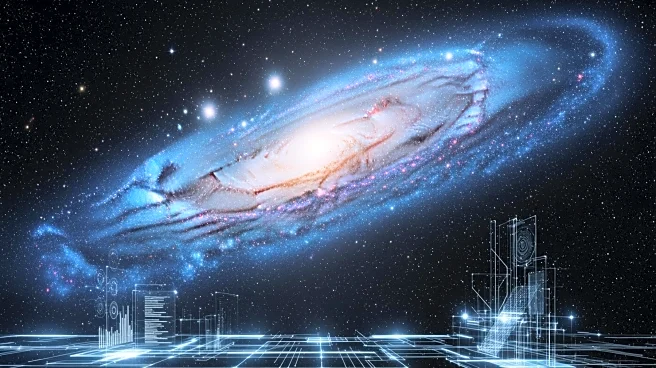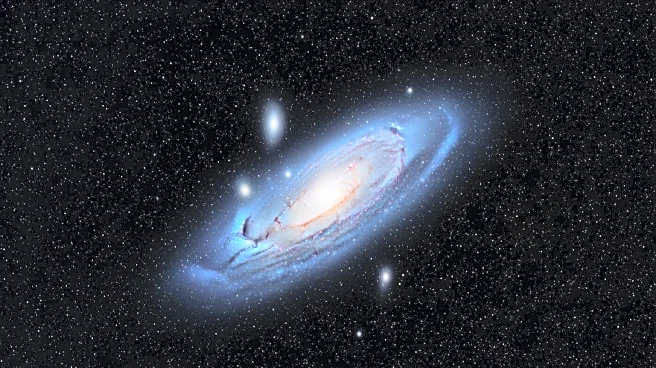What's Happening?
Researchers at the RIKEN Center in Japan, in collaboration with international partners, have created the first Milky Way simulation capable of tracking over 100 billion stars. This achievement was made
possible by integrating artificial intelligence with advanced numerical simulation techniques. The model, presented at the SC '25 conference, represents a significant advancement in astrophysics, allowing for detailed study of galactic evolution and star formation. The simulation was completed more than 100 times faster than previous models, offering unprecedented resolution and speed.
Why It's Important?
This breakthrough in simulating the Milky Way has far-reaching implications for astrophysics and computational science. By providing a detailed model of the galaxy, researchers can better understand the processes that govern star formation and galactic evolution. The use of AI in this context demonstrates its potential to revolutionize scientific research, offering new tools for discovery and analysis. The success of this simulation could pave the way for similar advancements in other fields, such as climate modeling and Earth system studies, where complex, multi-scale simulations are required.
Beyond the Headlines
The integration of AI with high-performance computing marks a transformative shift in scientific research methodologies. This approach not only enhances the accuracy and efficiency of simulations but also opens new avenues for interdisciplinary collaboration. The ability to model complex systems with high precision could lead to breakthroughs in understanding fundamental scientific questions, from the origins of the universe to the dynamics of Earth's climate. As AI continues to evolve, its role in scientific discovery is likely to expand, challenging traditional research paradigms and offering new possibilities for innovation.











